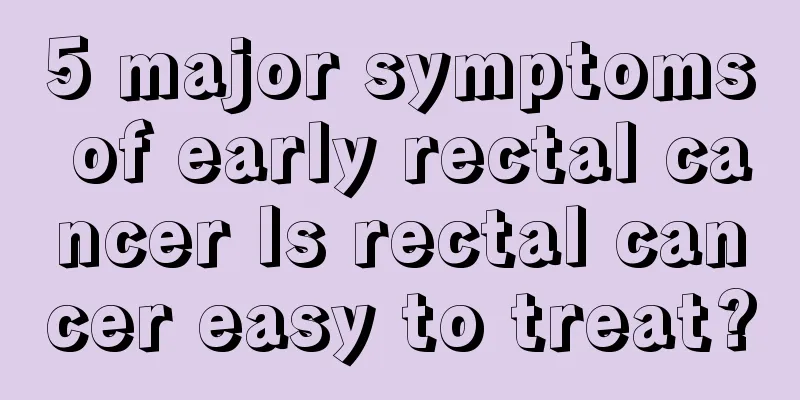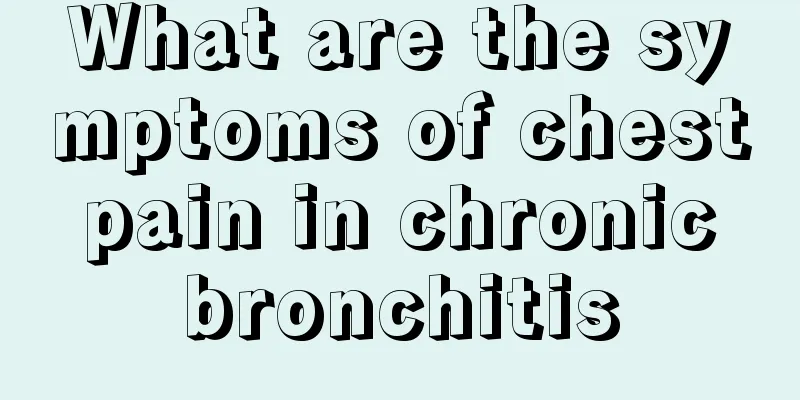5 major symptoms of early rectal cancer Is rectal cancer easy to treat?

|
Typical early symptoms of rectal cancer include blood in the stool, changes in bowel habits, abdominal pain, mucus in the stool, and weight loss. The treatment effect of early rectal cancer is relatively good. Whether it can be cured depends on the severity of the disease at the time of discovery and the choice of treatment. Early diagnosis and treatment are crucial. 15 symptoms of early colorectal cancer In the early stages of colorectal cancer, there are five symptoms that may be present. These signs are easily overlooked, and knowing them will help you seek medical attention in a timely manner: Blood in the stool: One of the most common symptoms of early rectal cancer. The blood is mostly bright red or dark red and is often mistaken for hemorrhoids. Changes in bowel habits: Patients may experience alternating diarrhea and constipation or a feeling of incomplete bowel movements, with significant changes in frequency. Abdominal pain: Some patients may feel discomfort in the abdomen, especially in the rectum, and the pain may be dull or cramping. Mucus in stool: White or transparent mucus may be found in the stool during defecation, which is a manifestation of inflammatory response in the digestive tract. Weight loss: Sudden and significant weight loss without any intentional weight loss may indicate the presence of a tumor. 2Is rectal cancer easy to cure? The cure rate of early rectal cancer is high, and early detection and active treatment are the key. Commonly used treatment methods include the following: Surgical treatment: The preferred method is surgical resection of the diseased tissue, which is suitable for early and localized rectal cancer, such as local resection and low anterior resection. Radiotherapy and chemotherapy: For patients with larger lesions, preoperative or postoperative radiotherapy can shrink the tumor and prevent recurrence. Chemotherapy drugs such as capecitabine and oxaliplatin are effective as adjuvant treatments. Targeted and immunotherapy: For advanced patients, targeted drugs such as bevacizumab and PD-1 inhibitors can effectively improve the quality of life. 3. Prevention and care Dietary adjustment: Avoid high-fat, high-calorie diets, and consume more foods rich in dietary fiber such as fruits and whole grains. Develop good bowel habits: Try to reduce the triggers of constipation and intestinal inflammation. Regular screening: People over 40 years old, especially those with a family history, should undergo regular colonoscopy to detect potential lesions early. If the above symptoms occur, you should go to the hospital as soon as possible to get a clear diagnosis and develop a treatment plan. Early intervention can significantly improve the patient's survival rate and quality of life. |
<<: Will vocal cord leukoplakia definitely turn into laryngeal cancer?
>>: How harmful is ovarian teratoma?
Recommend
Do I need to hold my urine when doing an ultrasound at 3 months old?
When a woman is three months pregnant, she is sti...
Seven good ways to maintain health after meals
Many people only focus on the nutrition in food, ...
When is the best time to drink kelp vinegar
Because kelp is easy to prepare, it is now served...
Prevention of lung cancer should start with quitting smoking
What is the cause of lung cancer? Why are more an...
There are three pains in the early stage of cervical cancer
In the early stage of cervical cancer, pain in th...
How much does surgery for advanced pancreatic cancer cost
Pancreatic cancer is known as the "king of c...
Get up and do these eight things, and you will have a healthy life
When people reach middle age, they begin to consi...
What happened if my period is delayed for ten days?
Menstruation is another name for the arrival of a...
What is the cure rate of nasopharyngeal carcinoma and how to treat it
What is the treatment rate for nasopharyngeal car...
Which is more toxic, hair dye or hair treatment?
Everyone wants to have beautiful hair, which can ...
Dorsal nerve block surgery turns out to have so many harmful effects!
Many men have too many dorsal nerves in the penis...
White vinegar treats chronic eczema
The unique acidity of white vinegar not only exis...
Exercise can prevent lymphoma patients from getting sick
Lymphocytes are the health guardians of the human...
What are the symptoms of bone cancer?
Symptoms of bone cancer include a lump, night pai...
Can fig leaves cure mole sores?
Hemorrhoids are a disease in which foreign object...









